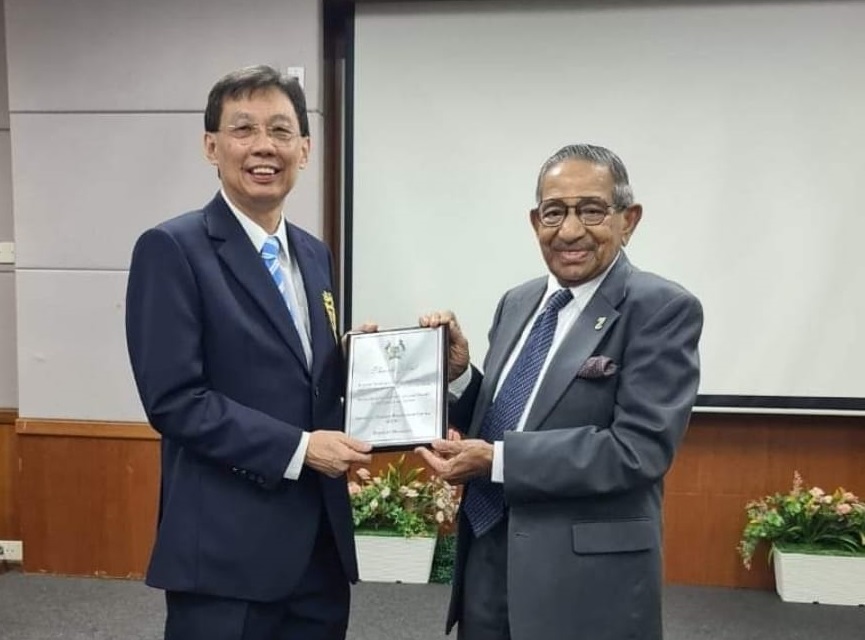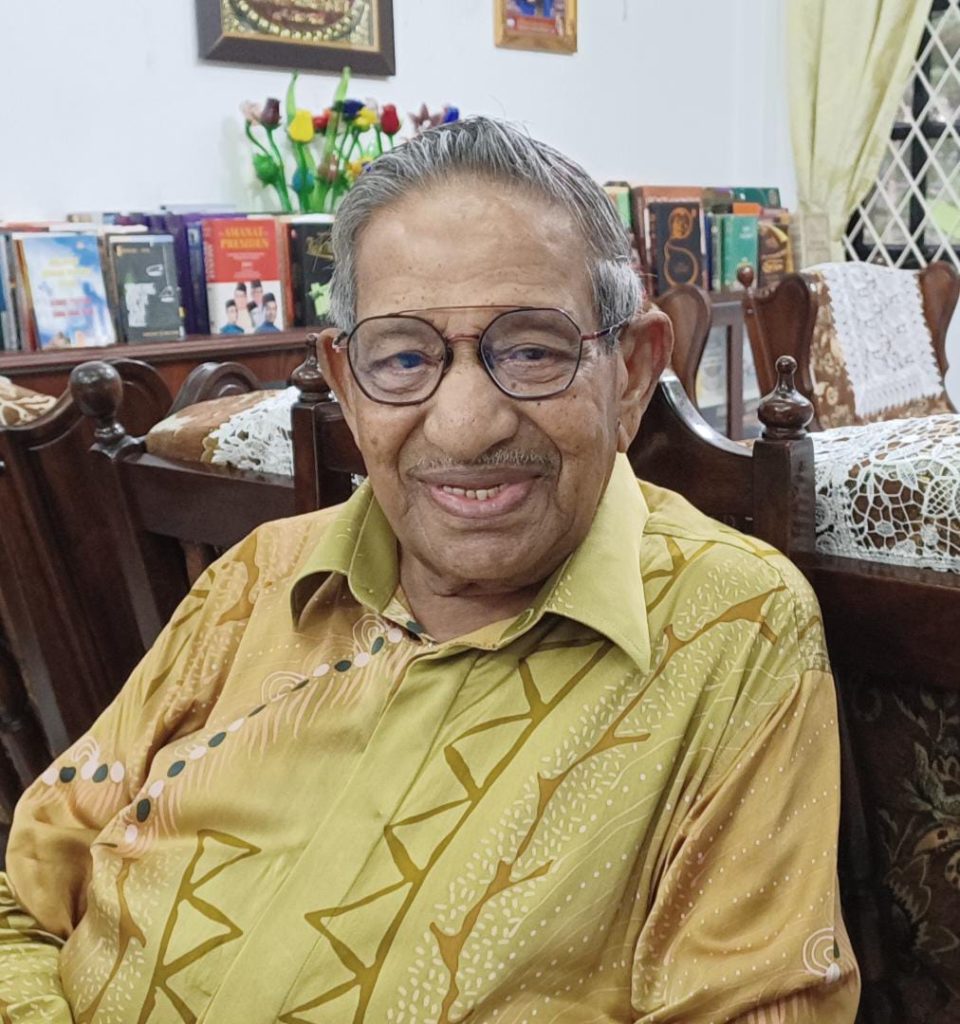

KUALA LUMPUR, May 23 – What do you do when you are unhappy with something in a business deal or you have it up to your neck with someone in the community or even family? You might decide to sue them, take them to court!
But the question is: would you get your problem resolved quickly? The short answer is no. You might have to seek a better way out.
With society becoming more litigious these days, our court system has been inundated by a rising level of disputes. As at 2022, there were 519 cases in the Federal Court, 6,307 in the Court of Appeal and in excess of 15,000 in the High Court and Subordinate Courts.
“It can therefore be discerned that there is no recession in the courts,” says Datuk Lim Chong Fong, Judicial Commissioner in the Court of Appeal, when he spoke to participants of an Alternative Dispute Resolution (ADR) seminar recently.
As our nation matures, ironically this also brings along disputes, be it political, crime, economic, social or family-related, he adds. And they’ve to be professionally dealt with to avoid chaos and breakdown of society.
So, is there a way out without resorting to the courts if you’ve a dispute? The answer is yes.
Perhaps one of the best ways forward is mediation, which forms part of ADR. There are generally three types of mediations here in Malaysia presently: contractual mediation, pre-action mediation and court annexed mediation. Contractual mediation is commonly a mandatory procedure written into the contract that must be done when a dispute ensues before that dispute can be finally resolved by arbitration.
And the good thing is that there’s an increasing number of activists (lawyers included) who feel that they could lighten the burden of our court system by getting more people well-versed in the art and science of mediation!
The Penang-based Advance Dispute Resolution Centre (ADRC), which comes under the auspices of the Penang Muhibbah Consultative Council (MPMNPP), an umbrella body of various NGOs to promote goodwill in the state, has taken the lead towards this direction earlier this year.
It teamed up with the Graduate School of Business at Universiti Sains Malaysia (USM) and the National Unity Department to run professional certificate courses to produce more mediators with the right mettle and knowledge to undertake important ADR tasks in the community.
MPMNPP President Tan Sri Mohd Yusoff Latiff says against the backdrop of the high numbers of social disputes between family members and among people in the community, mediators can help avoid a “winner takes all” situation.
“We want a ‘win-win’ system where all parties in a dispute can benefit from the outcome of the resolution process,” says the 93 year-old Yusoff, often regarded as an influential elder statesman of Penang, pointing to a situation where disputants can still live to see “eye-to-eye” with one another.
“If we don’t deal with the root of the problem, more disputes will surface eventually. This is not to say that the current judicial system is not good. It’s just that the current system is geared towards solving commercial disputes where issues are mostly about monetary compensation,” he adds.
Delving deeper into the subject, Lim says pre-action mediation is ad hoc and undertaken before court action is commenced typically through the initiative of the disputant parties themselves and/or through the influence, intervention and/or recommendation of a neutral third friendly party. Interestingly, both contractual mediation and pre-action mediation are anecdotally perceived as not extensively used in Malaysia.
Court annexed mediation, meanwhile, is undertaken after court action has been filed and started and ordered during court pre-trial case management. Court annexed mediation is, however, under the direct charge of the courts and mediation is undertaken at the direction of a judge.
Lim, who was a quantity surveyor and construction lawyer before he joined the judiciary, says construction disputes are always aplenty due to the nature of the Malaysian construction industry and the way it’s managed and operated. The incidence of under or non-payment for work done or services rendered is relatively high.
As such, he stresses that ADR is much needed because of the difficulty in resolving construction disputes in the courts because such cases are often technically complex, factually massive and hence too time consuming for the appetite of a judge!
It’s generally a truism that every disputant wants the dispute to be resolved justly, swiftly as well as economically or in lay terms — fair, fast and cheap!
And more than 10 years ago, it would have taken not less than three years to resolve a construction case in court, a situation which could be financially disastrous to many unpaid contractors and sub-contractors.
But Lim says the situation has now changed for the better since the introduction of specialist construction courts in 2013. The introduction of statutory adjudication via the Construction Industry Payment & Adjudication Act 2012 (CIPAA), which brings in another form of ADR, created an inexpensive and fast 100-working-day procedure that was attractive to unpaid contractors.
The CIPAA adjudication decision is binding and enforceable but not final in that it can be again finally resolved in arbitration or specialist construction courts. But it meant a “pay first and argue later” procedure. Statistics show that statutory adjudication has resolved 75% of the annual 800 or so formally registered construction disputes.
While mediation will not produce a binding decision unless a mediated settlement can be achieved, Lim notes that mediation of construction disputes has slowly gained traction under the auspices of the Master Builders Association Malaysia among its members as well as construction mediations under the purview of the Temporary Measures for Reducing the Impact of Coronavirus Disease Act 2020.
For Mohd Yusoff, he sees ADR playing a pivotal role for the community to resolve conflicts where they can be resolved outside of a courtroom, especially with present-day society fraught with many kinds of pressure!
“Everyday we are faced with many (almost) unsolvable disputes arising from families, between societies and their members. These are predominantly social disputes that are currently dealt with within our judicial system. Many a time, the settings of our judicial system, unfortunately, are not suitable to decide on these cases,” he says, adding that the service centres of politicians are also insufficient and ill-equipped to resolve these disputes.
Mohd Yusoff also stresses that the present judicial system also “does very little to protect the future relationship of the disputing parties, let alone deal with the underlying emotions of the parties.”
Citing ADR as more of a human-centric approach to resolving disputes and helping society to tackle the rise in conflicts, he adds that “if we don’t deal with the root of the disputes, more disputes will eventually surface.”
Given these parameters, Mohd Yusoff says activists at ADRC are stepping up efforts to train people with the right calibre as well as upstanding citizens in society to undertake the mammoth task of resolving social disputes. It is also to help society recover from its ills and return it to more peace and harmony.
One of the activists is Alwin Siah who says the ADR training course with the Graduate School of Business at USM and the National Unity Department is aimed at producing more mediators to help society tackle social conflicts amicably.
As such, he says ADRC welcomes community leaders and qualified individuals from various disciplines and industries to train as mediators and obtain professional accreditation from USM and other international bodies eventually.
Another ADRC activist, Ng Choon Chuan, says that the centre is also dedicated to promoting ESG or Environmental, Social and Governance issues.
He says the availability of virtual arbitration and mediation contributes to the environmental objectives through the reduction of paper used and in printing.
“They serve a dual purpose of lessening pressure on the overloaded courts besides creating beneficial impacts on environmental issues. ADR also contributes to social goals by providing a fair, effective and economical approach in resolving disputes because the ability of the disputing parties to control the results of their cases in a win-win situation can help both parties and society at large,” says Ng.
And in terms of governance, he adds that ADR also presents a less adversarial process than litigation in terms of governance, thus enabling ADR to have a positive environmental and social impact on the courts.
So, what’s the outlook for mediation in Malaysia?
Its proponents see tremendous potential in resolving civil, matrimonial, consumer and commercial disputes because of its non-confrontational and “win-win” nature.
To put it simply, it’s the swiftest and most economical way because a successful mediated resolution is often a middle ground compromise.
Detailed information on ADRC’s programme with USM’s Graduate School of Business and National Unity Department is available from ADRC’s Working Committee: William Hoe Chin Khwan, President (016-4977413), Alwin Siah Song Ling, Vice President (012-4869406), Tan Khee Kwong, Vice President (012-4779927) and Ng Choon Chuan, Vice President (019-4433629).
–WE